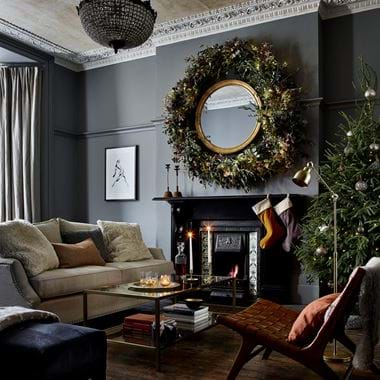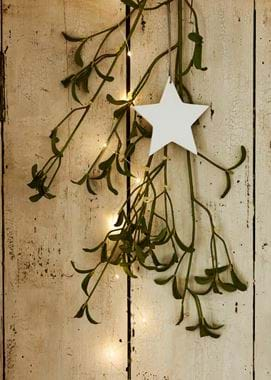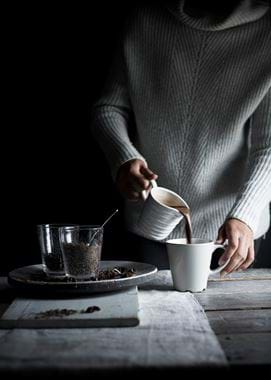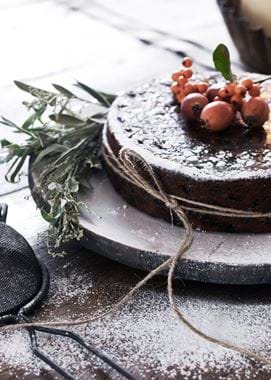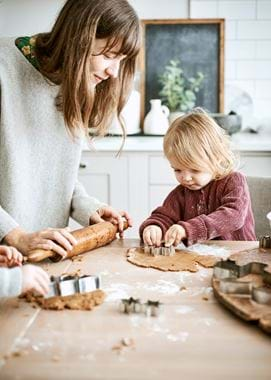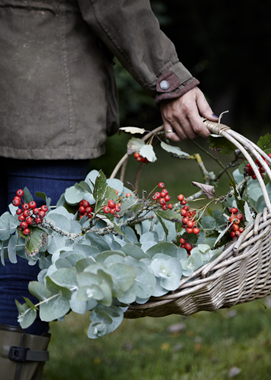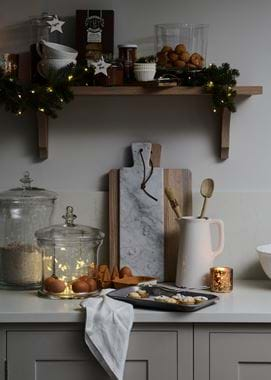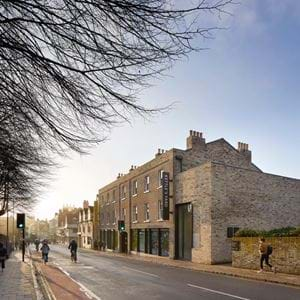Our seasonal traditions: the stories behind Christmas
Our seasonal traditions: the stories behind Christmas
Christmas is nothing if not a time for traditions – starting with making the pudding on Stir-up Sunday through to hanging stockings on Christmas Eve. Chances are, you already know the tales behind such traditions as the tree and the Christmas card, but how about some of the less well-known stories of the season?
Crackers
The must-have accompaniment to Christmas lunch, the cracker started out life (perhaps rather unsurprisingly, given its shape) as a bon-bon. East End confectioner Tom Smith brought these French sweets, often found wrapped in a twist of tissue paper, over to London in the 1840s after discovering them in Paris. The journey from there to the crackers we know today began with a small motto, included by Smith on the inside of the wrapper, followed by the snap (inspired by the crackle and pop of a log fire) and eventually the gift and paper hat inside, which were an idea of his son, Walter.
Carolling
All our Christmastime favourites, from Silent Night to In the Bleak Midwinter, and the practice of singing them from door to door, likely owe their existence to wassailing. Taking place on Twelfth Night to celebrate the new year, the wassailing festivities usually involved travelling from home to home accompanied by the ‘wassail bowl’, which would be filled with mulled wine or cider, and singing folk songs.
It was also common for the celebration to take place in local orchards, where the trees were sung to as a blessing in hopes of encouraging a good harvest in autumn. In fact, don’t be surprised if you come across just such an event in one of the cider-making counties, like Somerset and Cornwall, still today.
Mistletoe
There aren’t many plants so steeped in folklore as mistletoe. To start with, its part to play at Christmas has its roots in Celtic winter solstice celebrations, when Druids would climb into the sacred trees carrying the mistletoe (particularly oak trees, which also had religious significance) to cut down the balls. They would carry the mistletoe in their cloaks, so as not to let it touch the ground, before hanging it in doorways to ward off evil.
Quite how we arrived at the tradition of kissing under the mistletoe is less clear, although it should be said that you’re supposed to pluck a berry from the stems with each kiss until all the berries are gone.
Cake
Very much a love it or hate it thing, the Christmas cake is, nevertheless, still almost always a part of our festive celebrations. One story to explain its existence is that of the cake traditionally eaten on Twelfth Night. It was considered too decadent by Oliver Cromwell, who banned it along with all feasting on this day, so its eating was simply moved to the still-allowed Christmas Day celebration instead. Another tale goes that flour was added to the mixture for Christmas pudding and then eaten at Eastertime (the Christmas cake does bear unmistakeable resemblance to the Simnel cake). It was loved so much that the practice spread back into December too.
Stockings
Like the Christmas cake, there’s more than one claim to the origins of the stocking. Perhaps the most popular version of the tale is that Saint Nicholas, who was travelling from village to village spreading good cheer, heard about a family in need of a helping hand. The father, a widower, wasn’t able to let his three daughters marry, as he had no dowry to give them. So, Saint Nicholas dropped a handful of gold coins (or three gold balls, depending on which version of the story you’re listening to) down their chimney. They landed in the daughters’ stockings, which were hanging by the fireplace to dry, and so the practice of leaving gold coins (or rather, chocolate coins) and clementines (to represent the gold balls) in loved ones’ stockings on Christmas Eve was born.
The other story belongs to Norse mythology. The god Odin would fly through the sky at night on his horse, Sleipnir. Just as we leave out carrots for Santa’s reindeer today, children would fill their boots with hay and sugar for Sleipnir and place them by the chimney. In return, Odin would leave gifts behind in their boots.
Pudding
Most of us know that making your own Christmas pudding really ought to take place on the last Sunday before advent (as much rooted in practicality – so the pudding has time to mature – as it is anything else). And that the name, Stir-up Sunday, comes from the collect for the day in the Book of Common Prayer, which begins, ‘Stir up, we beseech thee.’ But how about that the number of ingredients should be thirteen, for Jesus and his twelve disciples? Or that the traditional sprig of holly on top represents the crown of thorns? And that, like many Christmas traditions, the pudding is wrapped up in both Christian and pagan lore – we douse it in brandy and set it alight in order to dance around its flames (although most of us forgo that particular tradition nowadays).
A tradition shared
A couple of weeks ago, we asked our followers on Instagram to share their own Christmas traditions with us. Here are just a few of the ideas you told us about – along with the traditions of John, our co-founder, and his family, and those of the creative mind behind our in-store displays, Georgina. Hopefully, they’ll inspire a new festive ritual to add to your own.
“We celebrate on Christmas Eve with a traditional Polish fish supper, and wait until the first star before we give out presents.”
“Making mince pies topped with marzipan stars.”
“Bringing in the ‘green’: collecting fresh holly from the woods to decorate with.”
“Baking Christmas biscuits with my daughter just like my mum did with me when I was little.”
“For us, hot chocolate before bed on Christmas Eve is a must.”
“I make us all chocolate Florentines and we hang them on the tree a few days before Christmas. We also choose a new bauble for each other every year.” – Georgina
“We put our tree up on our daughter Daisy’s birthday – 13th December. And we always have a raclette on Christmas Eve, which is a fun family affair and a tradition from skiing holidays. Then, Christmas Day means a walk to church across the field, come rain or shine, followed by a brunch of scrambled eggs and hot roast salmon.” – John and Emma Sims Hilditch

